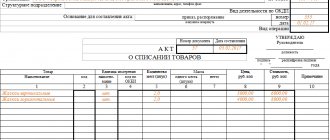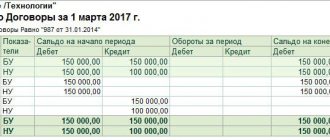Defects that arise during the molding of plastic products can have different origins. These may be defects associated with an unsuccessfully selected composition of the plastic (composition defects); defects caused by a violation of the molding technological regime and its incorrect selection (forming defects); as well as defects associated with insufficiently thorough mechanical processing or decoration of already molded products (finishing defects).
Composition defects arise when the recipes are incorrectly selected or low-quality components of composite plastics are used, when their optimal ratio is violated.
Composition defects include:
foreign inclusions - visible foreign inclusions resulting from contamination of the plastic composition or equipment;
reduced mechanical strength that occurs with low or excessive filler content. If the content is low, the filler does not have the proper reinforcing effect; if it is in excess, it is not completely wetted by the polymer;
increased water absorption is the result of an excess amount of hygroscopic fillers.
Molding defects arise due to deficiencies in the design of the mold and molding machines, incorrect selection or violation of the plastic processing regime. Particularly important is compliance with the temperature regime and duration of the molding operation. With deviations from the optimal molding temperature, uneven heating of molds, rapid or slow cooling, destructive processes can occur, significant internal stresses may arise, causing deformation of products, appearance of defects in appearance, and also reducing mechanical strength. The most common molding defects include the following: warping - distortion of the shape of products due to differences in the temperatures of the punch and the mold matrix, removal from the mold of an uncooled (for thermoplastics) or uncured (for thermosets) product, uneven shrinkage of plastic components;
cracks are narrow gaps in products resulting from significant internal stresses due to violation of the molding temperature conditions, as well as excessive moisture in the molding sand;
sinks are voids in products that are formed when foreign gas inclusions or gaseous destruction products enter. Shrinkage cavities occur when individual components of the mixture shrink excessively;
swellings - small or large bulges on the surface that arise as a result of increased moisture content in the molding sand, violation of the molding regime (too fast movement of the core pumping air, low specific pressure, etc.);
chips - depressions on the surface of products that occur due to mechanical damage;
burrs - sharp protrusions along the edge and bottom of the product; technological joints - visible lines of connection (junction) of portions of the casting mass, formed when the mass is overheated and low molding pressure;
streaks - noticeable traces of spreading of plastic in the form of stripes or spots due to different viscosity of the molten molding mixture;
flash (burr) - thickening on the surface of pressed products at the place where the mold is separated due to excess or low fluidity of the press powder;
risks and scratches - the result of processing the surface of the mold with coarse abrasive material or damage by foreigners on the surface of the mold;
sprue protrusion - the remaining sprue on the front surface of the product that has not been removed or cleaned;
ejector marks - protrusions and indentations on the body that appear when an unhardened product is ejected from the mold;
traces from the mold connector - a thickened seam on the surface of the product from the flow of plastic when parts of the mold are not tightly connected;
dullness - spots of reduced gloss that form due to insufficient polishing and lubrication of the mold, low temperature or insufficient exposure during pressing.
Finishing defects may be the result of careless or poor-quality performance of a number of operations to correct molding defects: poor removal of flash, poor polishing of marks, scratches and marks from mold connectors, etc. The introduction of new defects in the case of using flash to clean up and removing marks from the sprue, coarse abrasive materials. Finishing defects also include defects associated with post-technological decoration of products: the use of paint compositions with low adhesion, unclear drawing, displacement of decorative components, peeling of decor, spreading of dye, careless execution of decor, etc. In accordance with the requirements of the standards, product defects are divided into unacceptable and acceptable.
Unacceptable defects are holes, cracks, stains, flash, warping of more than 0.5% of overall dimensions (for pressed products), migration of dye, displacement of the component parts of the design and spreading of dye, distorting the appearance of the product.
Other defects are allowed in products if they do not spoil its appearance and their size (quantity) does not exceed permissible limits.
29. Make a conclusion about the quality of an enameled steel teapot with a single-color enamel coating if it has the following defects:
1. “fish scales”;
2. The cover falls out when tilted at an angle of 60º.
Solution;
To solve the problem, we use GOST 24788 - 2001. Household enameled steel utensils. General technical conditions.
1. “fish scales” - not allowed (p. 6, v. 3, p. 1)
2. “the cover falling out when tilted at an angle of 60º” is not allowed (p. 6, clause 5.3.2.2).
CONCLUSION: according to GOST 24788 - 2001, the enameled steel teapot from the received batch does not meet the requirements of the standard and is not allowed for sale.
34. Make a product description of 3 samples of metal utensils in the following form:
Galvanized buckets - purpose, application, price
Production, purpose and scope of galvanized buckets
As you know, a galvanized bucket is a container used for storing and transporting liquid and bulk materials and substances over short distances. In addition, the buckets are galvanized
can be used for storing various small parts, when loading garbage and during cleaning.
The range of use of all buckets, including galvanized ones, is very wide. Galvanized buckets will serve well when loading solutions, wood and metal shavings and sawdust, gravel, sand: their high strength makes it possible to quickly scoop up materials without using shovels, directly, without scattering them, which is not always possible to do using fragile plastic buckets. They are often used to extinguish fires or as a container for garbage. In Ukraine,
the most popular are
galvanized buckets of 10 liters
, although there are similar buckets of 7 liters, 12 liters, and also
galvanized buckets of 15 liters
.
In the construction field of human activity, a galvanized bucket is simply necessary. Here it is used for transferring and preparing enamels, varnishes, adhesives, finishing solutions and for delivering water. For ease of transportation, it is equipped with a metal shackle that can withstand weight up to 15 kg, and has a durable body that does not change shape. The increased strength and long service life of this utensil is achieved due to the fact that thin sheet metal is used for its manufacture, protected from rust and from the effects of various chemical compounds by a special coating, which distinguishes a galvanized bucket from its functional analogues produced by industry. If we compare them with plastic buckets, the disadvantage of greater weight is more than offset by the fact that they can store a wide range of chemically active substances (solvents, etc.) that do not come into contact with the protected metal, but can change not only the properties , but also the structure of polymers. All of the above is the reason that our contemporaries, who have decided to make repairs in their apartment/house, strive to buy
It is the galvanized buckets, giving them preference over all other utensils with similar functional purposes.
Enter the site
How would everything be interchangeable and in case of breakdown/wear you can buy a separate part to replace it - when replacing it in the future, then we immediately write it off as a cost?
— Do I need to do a completion certificate? I want to draw the moderator's attention to this message because:
A notification is being sent.
[e-mail hidden] Minsk Posted by 262 Reputation: December 4, 2013, 5:01 pm Finski, the cost of transferring inventory into operation is debited from account 10.9.
Is the quantity written off at the time of knockout due to a breakdown, for example? no further suitability. I would not complete the mop, but would write everything off separately, because... If, for example, a pen or holder breaks, you simply write it off and buy new ones.
And so, complete the mop (a complete set certificate is needed), and then when
Application of buckets
Application area:
The galvanized bucket is a classic item that has found
application
in many industries. This container can be successfully used not only for storing and transporting liquids. A galvanized bucket can easily withstand high temperatures, which is why many housewives heat water in it. It is not afraid of rust and will serve you for many years.
Galvanized buckets 7 liters
, 10 liters, 15 liters and
galvanized buckets 12 liters
, are made by stitching with subsequent sealing of the seams, and the fittings of these dishes are made from metal that has similar characteristics to the original one. Being of high quality, the zinc coating does not crack or peel off. All these characteristics ensure a fairly long service life of such buckets: from three to five years. A source of information
Mop life
"" is the period of time during which the manufacturer undertakes to provide the consumer with the opportunity to use the mop for its intended purpose and is responsible for significant deficiencies that may arise in the mop.
New: express test - whether the product can be returned to the seller is available at Article table of contents During the service life of the mop, the consumer has every right to:
- possibility of using a mop;
- repair and proper maintenance of the mop;
- presenting demands for the free elimination of significant defects of the mop, even if the warranty period has expired;
- compensation for damage caused by the mop.
If the service life of the mop is not established, then the manufacturer is obliged to ensure the above consumer rights for 10 years.
Thus, as a rule, it is much more profitable for the manufacturer to set a service life than not to set it. is established by the manufacturer, while the manufacturer (performer, seller) is obliged to promptly provide the consumer with the necessary and reliable information, which must necessarily contain information about the service life of the mop. in accordance with , the manufacturer is obliged to establish the service life of durable goods, including components (parts, assemblies, assemblies), which after a certain period can:
- pose a danger to the life and health of the consumer,
- cause damage to his property or the environment.
, including components (parts, assemblies, assemblies), which after a certain period may pose a danger to the life, health of the consumer, cause harm to his property or the environment, are contained in a special list approved by the Government of the Russian Federation.
In all other cases, establishing the service life is the right of the manufacturer, i.e.
it may not set a service life.
The service life can be calculated in units of time, as well as other units of measurement - kilometers, meters, etc., based on the functional purpose of the product. The service life of the mop begins to flow from the moment the mop is handed over to the consumer, unless otherwise provided by the contract. (No ratings yet) Search: More than 90% of site visitors were satisfied with the answers.
Ask! Moscow and Moscow region St. Petersburg and region All regions of Russia Our lawyers!
Call! Or write to CHAT at the bottom of the page.
What are the defects of carpets, dry cleaners and laundries?
As a result of use, carpet products significantly lose their original properties and acquire:
a) fatal or difficult to remove defects, which include:
- yellowing or browning of the pile surface of white and light-colored carpets. This defect can occur due to the destruction of optical brighteners over time, as well as “aging” processes (oxidative processes under the influence of light, atmospheric oxygen, etc.), as well as when moisture gets on the carpet, which is accompanied by washing out of the soil of the carpet, tannins and pectin substances (natural dyes) and their migration to the ends of the pile yarn. The defect cannot be repaired;
- the formation of pellets that appear in the initial stage of abrasion of the material.
How to write off expenses in tax accounting
The cost of materials that are used to carry out work is classified as material costs (clause 1, clause 1, article 254 of the Tax Code of the Russian Federation). At the same time, no restrictions on the amount of consumable materials (in accordance with established norms, regulations, etc.) are established in this article of the Tax Code of the Russian Federation. The main thing is that expenses must be documented and justified. This follows from clause 1 of Article 252 of the Tax Code of the Russian Federation.
Thus, in tax accounting, the entire cost of the materials consumed is written off as expenses, and not what was included in the estimate. At the same time, the accounting policy of the construction organization must specify the procedure for determining the amount of material costs when writing off raw materials and materials used in the performance of work. In other words, it is necessary to choose one of the methods for assessing materials provided for in paragraph 8 of Article 254 of the Tax Code of the Russian Federation:
- valuation method based on the cost of a unit of inventory;
- average cost valuation method;
- valuation method based on the cost of first-in-time acquisitions (FIFO);
- valuation method based on the cost of recent acquisitions (LIFO).
Example 4. Let's return to the conditions of examples 2 and 3, assuming that for both accounting and tax purposes, Stroitel LLC evaluates the materials used in performing the work at average cost.
In this case, the taxable profit in both examples is the same as the accounting profit.
R.P.Nichuk
Auditor
>Rates for write-off of materials in construction
Sample act of writing off material assets
The defect will worsen during processing and cannot always be eliminated;
- the presence of stains from blood, paint, ink, mold, animal secretions, protein, oils, fats, fuels and lubricants, fuel oil, glue, medicines, perfumes, red wine, bleach, acids, alkalis that were on the product for a long time during operation, as well as the presence of stains resulting from independent attempts to remove them with chemicals, soap and water. These stains are generally difficult to remove and things with them are accepted without a guarantee of stain removal, and salt etchings are not removed;
- moth etchings, tears, cuts, holes, torn edges, loose hinges, abrasions. The defect cannot be repaired;
- loss or migration of color due to self-removal of stains. The defect cannot be repaired.
- Tears in the frame fabric of the carpet may occur. During operation over time, under the influence of moisture, mold, disinfectant pesticides, unskilled stain removal or washing, traces of cement, tar, glue, the backing frame fabric weakens, and during the cleaning process, tears may form on it;
- undergo shrinkage;
- cracks may form on the latex base of the rugs;
- Peeling of the secondary backing may occur in imported pile-tufted carpets, the reverse side of which, in order to increase strength, dimensional stability and imitate a woven structure, is duplicated with a secondary backing made of jute fabric or fabric containing polypropylene film thread in the warp and jute yarn in the weft. The secondary ground fabric has a loose structure like burlap and is loosely secured along the perimeter of the carpet in the overlock seams, which often leads to its detachment from the overlock seam during the use of the carpet;
- the rubber base of the carpet becomes brittle and begins to crumble;
- a tear in the foam base is formed;
- There may be tears and loss of pile in woolen looped carpets made in China;
- staining may appear on tapestries painted in red or blue tones;
- dye breakage and migration on silk carpets is possible.
c) hidden defects that may appear after dry cleaning:
Darkening and discoloration of carpet
Shading is the change or deflection of light reflection from bent, wrinkled or worn carpet pile fibers. Most often, shading appears after liquid gets on the covering, reverse direction of fibers, or premature wear of the carpet in a certain area. Monocolor carpets, as well as carpets with small patterns, are susceptible to shading, however, shading is found on almost all types and types of industrially produced carpets.
The shading effect can appear even on new coatings, but this may not become a problem for the user until a professional cleaner carries out a comprehensive cleaning. In this case, the cleaner may be accused of all mortal sins, since he was the last one to touch the coating.
So what causes the appearance of concentric, oval and other manifestations of carpet damage, especially with cut pile? What to do about this, and how can the cleaner convey information about this problem to the client? There are several reasons, however, in the absence of physical wear of the pile, shading appears as a result of the influence of four important factors: 1. technical characteristics of the fiber (pile); 2. degree of wear; 3. exposure to abrasives; 4. quality of preparation of the base for laying.
So what is shading? Let's repeat: shading is the effect obtained by changing or deflecting reflected light from bent, wrinkled or worn fibers of the carpet pile. I would like to remind you that this is not a local change in color or shade (darkening or lightening), it is an apparent, imaginary change in the color palette due to exposure to light reflected differently from carpet fibers of the same color.
You can observe shading by simply looking at the damaged part of the carpet - you will see a sharp contrast of light and shadow on the pile. In areas where the fibers of the pile are not visible to the viewer, the pile will appear lighter as more light is reflected from these fibers. In areas where the fibers of the pile are directly in front of the viewer, the pile will appear darker as the person will see the shadows cast by the tips of the fibers. If the observer moves to the opposite side of the shading zone, the picture will change: what was dark will become lighter, what was light will darken.
Wear
Wear is defined by the carpet manufacturer as a decrease in carpet density and/or pile thickness of at least 10%, which is quite common. However, this definition differs from what a consumer considers wear and tear: any change in pile texture, warping, or fraying of a carpet. Eventually, carpet fibers will wear out anyway, especially in high-traffic areas; This applies to absolutely any carpeting. This is normal, but does not fall within the manufacturer’s definition of wear and tear.
As we said above, there are four common causes of shading on carpet. If you look only at the characteristics of pile (fiber), several reasons can also be noted.
1. Lack of elasticity. Some types of fibers are elastic, so they recover (rise) after being subjected to a load. Some are completely inelastic. Nylon is the most elastic of all synthetic fibers on the market, while olefin (mostly used in Berber-style rugs) and acrylic have virtually no elasticity. Many buyers purchase cheap olefin Berber carpets, and as a result, after a few months of use, clearly visible tracks from traffic form on the surface of the covering. The same can be said in relation to acrylic fibers, however, today almost no one produces acrylic carpets in their pure form. As a rule, acrylic and olefin fibers are most likely to deteriorate, but remember that any fiber, even the highest quality, will be severely crushed under the weight of the sofa.
2. Loss of pile density (crimp loss). Polyester fiber is made from recycled plastic drink bottles. This fiber is resistant to stains and other contaminants. However, time takes its toll, and under the influence of traffic and cleaning products and aggregates, the fibers stretch and lengthen, which leads to loss of carpet pile volume. This is especially noticeable if you compare the area where people walk and, say, the area along the walls and in the corners. The difference will be visible immediately.
3. Pooling. Formation of oval or circular texture changes in the pile on wool carpets). This effect is not a defect in the carpet, but a result of the natural characteristics of natural wool. This can be compared to the pattern on the skin of a person's fingertips: each pattern is unique, and the pooling on wool carpets is also unique. Often in the industry, different types of pile are combined, for example, combining wool with nylon (80% wool and 20% nylon) to minimize the appearance of pooling.
4. Exposure to abrasives (sand, small soil particles), microscratches appear on the carpet fiber, which causes changes in the reflection of light from the fibers. It's like rubbing a new, clean, undamaged plastic surface with sandpaper. No matter how much you clean the plastic afterwards, it will never be the same again, it will still look worn and unkempt. It is enough to compare carpet areas that are exposed to traffic and those that are not (for example, under furniture or along walls). Remember that the fibers of natural wool are not a single structure, but rather consist of overlapping scales (like human hair), and shading is not a problem here. All these are properties of natural wool, and not defects or defects.
5. Features of the base. Now it’s worth talking about preparing the foundations for subsequent installation. Even if the concrete base is laid according to all the rules and meets all existing standards, minor differences in height will still occur. Ultimately, unevenness and variations in the floor screed will be reflected in the carpet, causing changes in the reflection of light from the fibers over large areas (so-called watermarking and pooling). This often happens with contract coatings.
6. Carpet base. If you know what material the pile is made of, then you can guess what will cause the shading effect. However, keep in mind that no matter what material your rug is made of, sooner or later the shading will show. It's unavoidable.
Adjusting shading
Shading on natural wool carpets can be corrected by gentle cleaning using a hot water extraction method with the extractor only moving in one direction. The problem is that once the carpet is used again (people will walk on it), it will not take long for the shading to return.
A professional cleaner should anticipate this and explain everything to the customer in advance. Let us repeat again, this is not a defect, these are natural characteristics of the carpet.
A watermark is a large coverage area subject to shading. This effect causes the carpet to change shades of color in certain places. However, the cause of watermarks appearing over large areas is not a faulty carpet, but a poorly prepared substrate. Even if you replace the carpet with a new one, the watermark will appear again. It is necessary to carefully examine the basis and, if deficiencies are identified, they must be eliminated.
If you yourself are unable to convince the client that you are right, you can always seek advice from an independent expert. Such an expert, after carefully studying the problem that has arisen, will certainly confirm your words and defend you in front of the client.
To summarize all of the above, we note that most manufacturers and cleaners agree that shading cannot be considered a defect or the result of improper installation; shading is a natural property of almost any carpet. Manufacturers try to consider each case of shading on an individual basis, and, if possible, not involve their company in legal proceedings.
Reasons for writing off furniture.
Types of furniture damage
→ → Update: June 26, 2021
Furniture purchased by an organization for use in public premises (offices, hotels, cafes, shops, doctors' offices, concert halls, etc.) falls into disrepair much more often than its domestic counterparts. As a result of intensive use, individual items may be broken, dirty, the upholstery may be torn, etc.
Information that the organization’s property has fallen into disrepair is recorded in the process of drawing up annual inventory documents or at the time such facts are discovered.
The main reasons for writing off furniture (tables, chairs, etc.)
Inventory accounting Expand the list of categories Subscribe to a special free weekly newsletter to keep abreast of all changes in accounting: Join us on social media. networks: VAT, insurance premiums, simplified tax system 6%, simplified tax system 15%, UTII, personal income tax, penalties We send letters with the main discussions of the week >> Tax-tax January 07, 2021 The reason for writing off a chair, table, cabinet or office chair is the loss of most of the operational characteristics and criteria allowing the further use of the written-off item.
Let's consider the question in more detail. When we talk about furniture, we mostly think about office furniture. Although this could also be the setting of retail or industrial premises, as well as catering premises.
General points for which furniture can be considered unsuitable for further use are:
Consumption standards for building materials
The current system of pricing and estimate regulation in construction includes building codes and regulations: Part 4 of SNiP “Estimate Norms and Rules” and other estimate normative documents.
Estimated standards are a generalized name for a set of estimated standards, rates and prices, combined into separate collections. They are used to determine the estimated cost of construction and reconstruction of facilities.
An estimated norm is a set of resources (labor costs of workers, operating time of construction machines, requirements for materials, products and structures, etc.) established on the accepted meter for construction, installation or other work. The main function of estimate standards is to determine the standard amount of resources required to complete a particular job.
Estimated standards are based on the assumption that the work is performed under normal conditions, not complicated by external factors. If the work is carried out in special conditions (crowded conditions, gas pollution, near operating equipment, in areas with specific factors), then the coefficients given in the general provisions of the collections of standards are applied to the estimated standards.
The following estimate standards exist:
- federal (all-republican);
- departmental (industry);
- regional (local);
- user's own regulatory framework.
The cost of construction in estimates can be determined by various methods.
- Resource method. It consists in the fact that all costs are summed up in physical terms at current prices. In this case, indicators such as labor intensity (person-hours), time of use of construction machines (machine/hour), consumption of materials and components (pieces, sq. m, etc.) are used.
To determine these indicators, an organization can use its own data or use one of the collections of standard indicators, as well as the federal collection of estimated standards and prices for the operation of construction machines and vehicles.
- Basis-index method. According to this method, the cost of construction is determined as follows: the cost of enlarged types of construction products in basic prices is added up, and the result obtained is multiplied by the indices for converting basic prices into current ones.
- Resource-index method: the cost of construction is determined by the resource method in basic prices (as of January 1, 2000) and multiplied by indices that bring these prices to today's level.
- Basic compensation method: the cost of work and expenses at the basic price level and additional costs associated with changes in prices and tariffs for construction resources (material, technical, energy, labor, etc.) are added up.
- Data on previously constructed or designed objects is used.
Example 1. Stroitel LLC entered into an agreement to perform repair work for Renata JSC.
In accordance with the agreement, Stroitel LLC must paint the walls in the workshop of Renata JSC with water-based paint. Previously, these walls were painted with oil paint.
The area of the walls to be painted is 600 square meters. m. The contractual cost of the work is 55,000 rubles. (to simplify the example, we will assume that Stroitel LLC is not a VAT payer).
When drawing up the estimate <*>, Stroitel LLC used the collection GESNr-2001-62 “Painting works” (resource method), approved by Resolution of the State Construction Committee of Russia dated December 17, 1999 N 77. In the standards of the collection, the consumption of materials is calculated to complete the entire range of works necessary when repainting previously painted surfaces.
<*> Read more about the preparation of estimates in the article published in Appendix No. 2, 2003, p. 52.
In addition, the consumption of materials for painting surfaces is calculated based on the conditions of their production using ready-made compositions of putties, primers, and colors.
In particular, when performing work on painting walls with water-based paint, the complex of works provided for by GESNr-2001-62 includes the following operations: cleaning from contamination; clearing loose paint; bridging cracks and crevices; priming with soap solution; lubrication of cracks and potholes; sanding greased areas; putty of cleared and greased areas; sanding putty; second putty; grinding; priming of putty and greased areas; fluting; grinding; first coloring; fluting; sanding the painted surface with sandpaper; second coloring; fluting or facing.
The area of painting walls with oil compositions is determined by subtracting the area of openings along the outer contour of the frames with the addition of the area of painting pillars, pilasters, niches, window and door slopes.
Consumption rates per 100 sq. m of surface to be painted (painting with a water-based composition the surfaces of walls previously painted with oil paint with removal of more than 35% of old paint) are established in the table GESNr 62-16 (in our case - standard 62-16-9):
- labor costs of construction workers - 33.89 man-hours (average level of work - 3.1);
- labor costs for drivers - 0.16 man-hours;
- machines and mechanisms: mast lifts - 0.1 machine-hour; flatbed vehicle - 0.06 vehicle-hour;
- materials:
- 101-9844 - water-based paints - 0.071 t;
- 101-0623 — laundry soap — 5.1 pcs.;
- 101-0620 - ground chalk - 0.0255 t;
- 101-1712 — putty — 0.072 t;
- 101-1916 - sanding paper - 0.0016 x 1000 sq. m;
- 101-0639 - pumice - 0.0044 cubic meters. m;
- 411-1002 - water - 0.24 cubic meters. m;
- 101-1840 - painting glue - 4.02 kg.
Based on the above standards GESNr-2001-62, the estimated cost of materials required to complete the work (taking into account the fact that the actual area to be painted is 600 sq. m.) was calculated as follows.
Reason for writing off a tool that has become unusable
/ / 03/08/2018 5,029 Views 03/12/2018 03/12/2018 03/12/2018 The act is endorsed by the head of the tool or planning department and submitted to the central tool warehouse (CIS), which issues tools (devices) to the workshop of the same name, brand and size according to the act without issuing claims and limit cards. After the warehouse issues the tools (devices), the act is transferred to the accounting department, where, according to these acts, the tools (devices) are written off from the warehouse, without reflecting their movement through the dispensing storerooms of the workshops. Tools (devices) issued by the warehouse in the order of exchange according to acts are not reflected in the registration cards of distribution pantries.
[3] It is used to formalize the write-off of tools (devices) that have become unusable and exchange them for suitable ones at those enterprises where accounting is carried out using the exchange (working) fund method.
Decommissioning sledgehammer
02/21/2019 I.e. There needs to be a compelling reason for an organization to write off the ax from its balance sheet. Please advise, I really need it. An act for writing off the axe. A commission consisting of: foreman Lyapkin A.A., occupational safety engineer Tyapkin O.O., accountant Hapkin U.U.
drawn up this report that the carpenter's ax inventory number 001 has become unusable due to long-term use: there are small cracks and peelings of metal on the butt of the ax, there is a longitudinal crack and significant grooves on the blade, the correction of which is not possible. This ax does not meet safety requirements, as a result of which further operation is not possible. Signatures of the commission members. Well, something like this.
Write the defects more specifically. Source: Act MB-5 is endorsed by the head of the instrumental department, and is submitted to the central instrumental department
How to write off expenses in accounting
As stated in paragraph 11 of the Accounting Regulations “Accounting for Agreements (Contracts) for Capital Construction” PBU 2/94, approved by Order of the Ministry of Finance of Russia dated December 20, 1994 N 167, the contractor’s costs consist of all expenses associated with the performance of contract work under contract. In other words, in accounting, expenses must include the entire cost of materials consumed during construction or repairs (even if this expense exceeds the norm included in the estimate). Materials are written off in a similar way when the developer performs the work on his own (clause 8 of PBU 2/94).
Example 2. Let's return to the conditions of example 1.
Let us assume that, in fact, when performing work on painting walls in the workshop of ZAO Renata, the following expenses were incurred:
- materials were spent in the amount of 30,000 rubles;
- wages were accrued to employees (including unified social tax, contributions to the Pension Fund and accidents) in the amount of 10,101 rubles;
- depreciation of fixed assets was accrued - 50 rubles;
- General business expenses attributable to this order were written off - 4895 rubles. (in accordance with the accounting policy, account 26 is closed to account 20).
In the accounting of Stroitel LLC, the accountant will make the following entries:
Debit 20 Credit 10
- 30,000 rub. — consumed materials are written off;
Debit 20 Credit 70 (69)
- RUB 10,101 — wages to employees have been accrued (taking into account the unified social tax, insurance contributions to the Pension Fund of the Russian Federation and from industrial accidents);
Debit 20 Credit 02
- 50 rub. — depreciation of fixed assets used during repairs was calculated;
Debit 20 Credit 26
- 4895 rub. — general business expenses attributable to this order are written off;
Debit 62 Credit 90 subaccount “Revenue”
- 55,000 rub. — revenue from repair work for Renata CJSC is reflected;
Debit 90 subaccount “Cost of sales” Credit 20
- RUB 45,046 (30,000 + 10,101 + 50 + 4895) - expenses for repair work for Renata CJSC were written off;
Debit 90 subaccount “Profit/loss from sales” Credit 99
- 9954 rub. (55,000 - 45,046) - profit from repair work for Renata CJSC is reflected.
If an organization performs work using materials provided by the customer, then the materials received from the customer should be considered as customer-supplied raw materials and reflected in off-balance sheet account 003 “Materials accepted for processing.”
Example 3. Let's change the conditions of examples 1 and 2. Let's assume that water-based paint costs 11,076 rubles. was provided by the customer - ZAO Renata. Other materials for a total estimated amount of 18,091.4 rubles. (29,167.4 - 11,076.0) Stroitel LLC acquired independently. In fact, materials worth 18,500 rubles were purchased. All these materials were used to paint the walls. The remaining costs are the same as in example 2.
Since part of the work was done from the customer’s material, the cost of the work was not 55,000 rubles, but 43,924 rubles. (55,000 - 11,076).
In this case, the accountant of Stroitel LLC must record the transactions as follows:
Debit 003
- RUB 11,076 — water-based paint was received from JSC Renata;
Debit 20 Credit 10
- 18,500 rub. — consumed materials are written off (except for water-based paint provided by the customer);
Credit 003
- RUB 11,076 — water-based paint used during the work was written off;
Debit 20 Credit 70 (69)
- RUB 10,101 — wages to employees have been accrued (taking into account the unified social tax, insurance contributions to the Pension Fund of the Russian Federation and from industrial accidents);
Debit 20 Credit 02
- 50 rub. — depreciation of fixed assets used during repairs was calculated;
Debit 20 Credit 26
- 4895 rub. — general business expenses attributable to this order are written off;
Debit 62 Credit 90 subaccount “Revenue”
- RUB 43,924 — revenue from repair work for Renata CJSC is reflected;
Debit 90 subaccount “Cost of sales” Credit 20
- RUB 33,546 (18 500 + 10 101 + 50 + 4895) - expenses for repair work for Renata CJSC were written off;
Debit 90 subaccount “Profit/loss from sales” Credit 99
- RUB 10,378 (43,924 - 33,546) - profit from repair work for Renata CJSC is reflected.
Reasons for writing off a galvanized bucket
Contents Utensils made of metal are mainly produced in two ways: the casting method and the plastic deformation method, this is determined by the type of metal or alloy used.
Each method is characterized by certain defects, for this reason they are considered separately. Rodina, T.G. Commodity research of homogeneous groups of non-food products: Textbook for bachelors / L.G.
Eliseeva, T.G. Rodina, A.V. Ryzhakova; Ed. L.G. Eliseeva. - M.: Dashkov and K, 2013. - 930 p. Shells are open or closed cavities in the body of goods.






